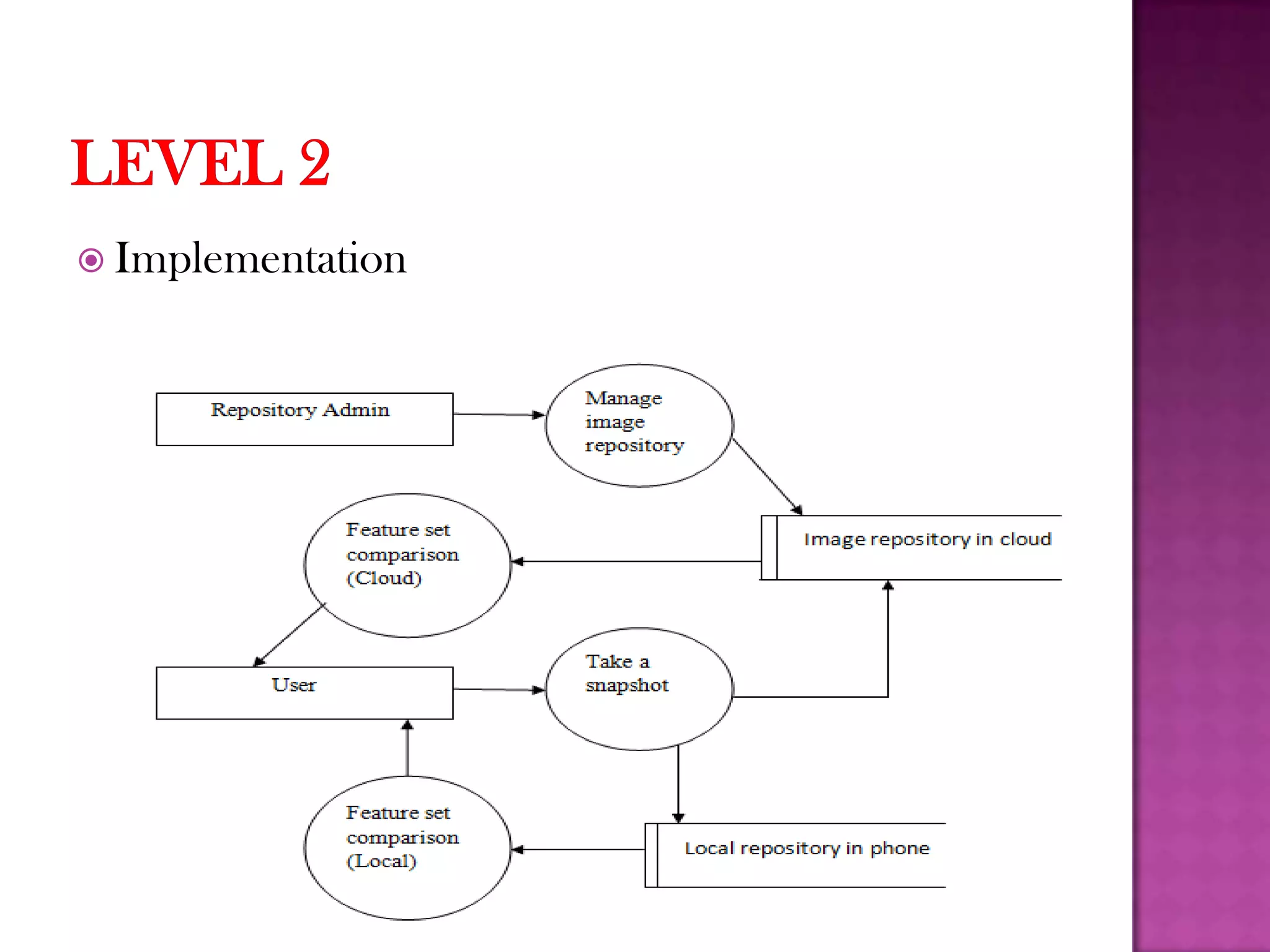This document discusses mobile cloud computing and outlines a project on gearing resource-poor mobile devices with powerful clouds. It introduces three common mobile cloud architectures: centralized cloud, cloudlet, and ad hoc mobile cloud. It also discusses computation offloading and capability extending. The project modules are described as an energy-saving module using content-based image retrieval offloaded to the cloud, a computation offloading module, and a security and reliability module. It concludes that mobile cloud computing can change technology trends and daily life by allowing more intensive applications on mobile devices.
























